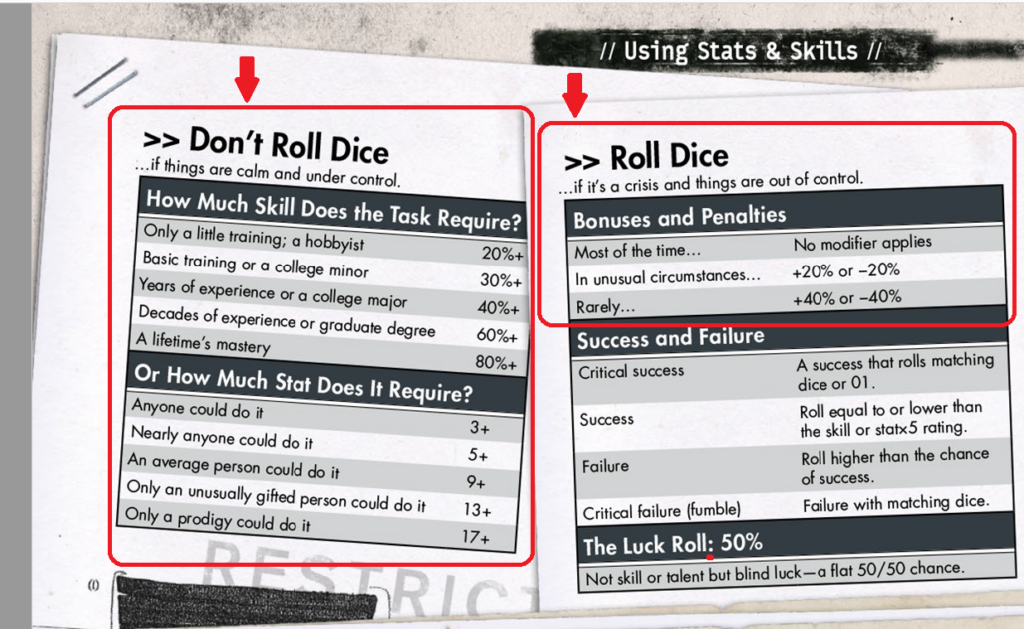Two of my favorite practical mechanics in Delta Green
I started up a Delta Green [affiliate link] campaign last September, and it’s been a blast. It’s become one of my favorite RPGs, and with a few sessions under my belt that means I’ve done some noodling about why that’s the case. One part of it — the bit I want to look at today […]
Two of my favorite practical mechanics in Delta Green Read More »

